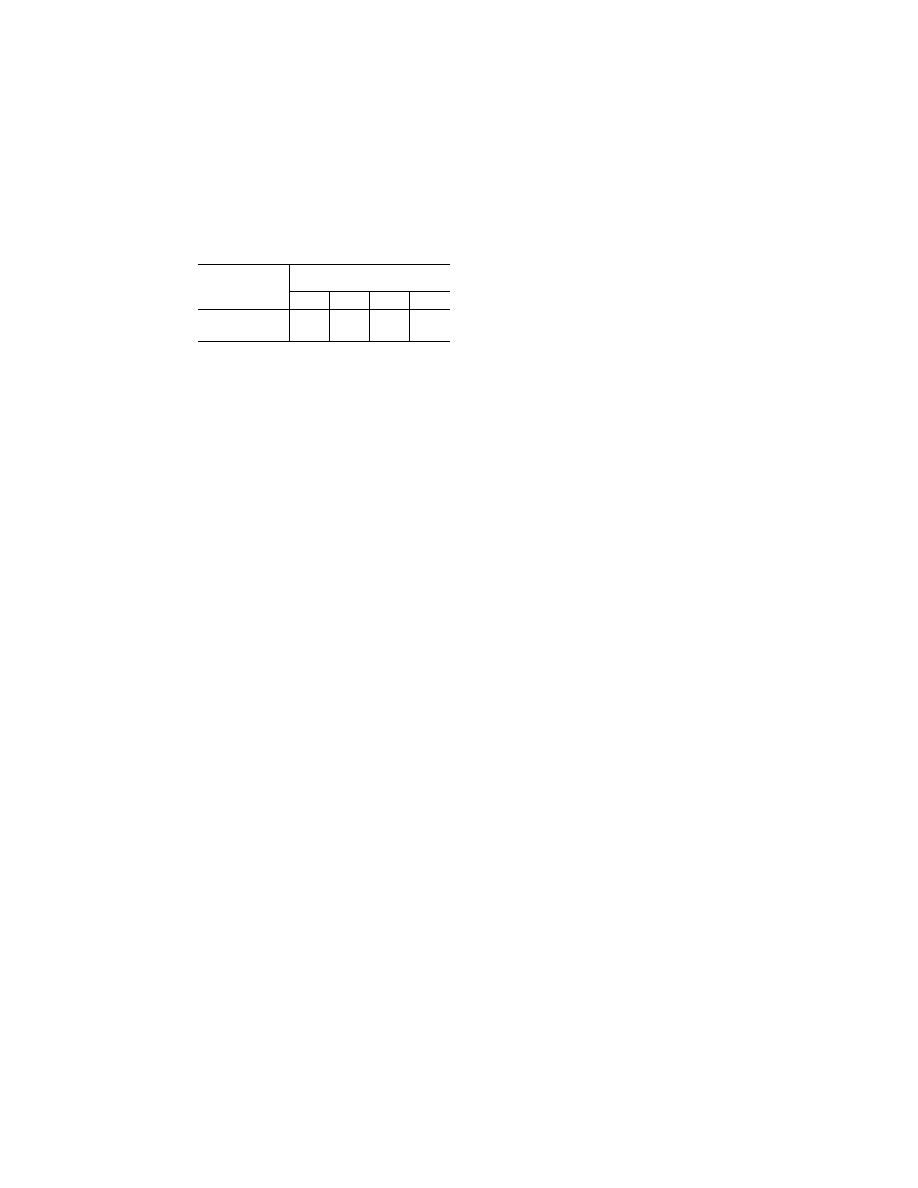
615
Federal Aviation Administration, DOT
§ 29.809
Passenger seating
capacity
Emergency exits for each
side of the fuselage
Type I
Type II Type III
Type IV
40 through 59 ..........
1 ............
............
1
60 through 79 ..........
1 ............
1 or
2
(c)
Passenger emergency exits; other
than side-of-fuselage.
In addition to the
requirements of paragraph (b) of this
section—
(1) There must be enough openings in
the top, bottom, or ends of the fuselage
to allow evacuation with the rotorcraft
on its side; or
(2) The probability of the rotorcraft
coming to rest on its side in a crash
landing must be extremely remote.
(d)
Ditching emergency exits for pas-
sengers.
If certification with ditching
provisions is requested, ditching emer-
gency exits must be provided in accord-
ance with the following requirements
and must be proven by test, demonstra-
tion, or analysis unless the emergency
exits required by paragraph (b) of this
section already meet these require-
ments.
(1) For rotorcraft that have a pas-
senger seating configuration, excluding
pilots seats, of nine seats or less, one
exit above the waterline in each side of
the rotorcraft, meeting at least the di-
mensions of a Type IV exit.
(2) For rotorcraft that have a pas-
senger seating configuration, excluding
pilots seats, of 10 seats or more, one
exit above the waterline in a side of the
rotorcraft meeting at least the dimen-
sions of a Type III exit, for each unit
(or part of a unit) of 35 passenger seats,
but no less than two such exits in the
passenger cabin, with one on each side
of the rotorcraft. However, where it
has been shown through analysis,
ditching demonstrations, or any other
tests found necessary by the Adminis-
trator, that the evacuation capability
of the rotorcraft during ditching is im-
proved by the use of larger exits, or by
other means, the passenger seat to exit
ratio may be increased.
(3) Flotation devices, whether stowed
or deployed, may not interfere with or
obstruct the exits.
(e)
Ramp exits.
One Type I exit only,
or one Type II exit only, that is re-
quired in the side of the fuselage under
paragraph (b) of this section, may be
installed instead in the ramp of floor
ramp rotorcraft if—
(1) Its installation in the side of the
fuselage is impractical; and
(2) Its installation in the ramp meets
§ 29.813.
(f)
Tests.
The proper functioning of
each emergency exit must be shown by
test.
[Amdt. 29–3, 33 FR 968, Jan. 26, 1968, as
amended by Amdt. 29–12, 41 FR 55472, Dec. 20,
1976; Amdt. 27–26, 55 FR 8004, Mar. 6, 1990]
§ 29.809
Emergency exit arrangement.
(a) Each emergency exit must consist
of a movable door or hatch in the ex-
ternal walls of the fuselage and must
provide an unobstructed opening to the
outside.
(b) Each emergency exit must be
openable from the inside and from the
outside.
(c) The means of opening each emer-
gency exit must be simple and obvious
and may not require exceptional effort.
(d) There must be means for locking
each emergency exit and for preventing
opening in flight inadvertently or as a
result of mechanical failure.
(e) There must be means to minimize
the probability of the jamming of any
emergency exit in a minor crash land-
ing as a result of fuselage deformation
under the ultimate inertial forces in
§ 29.783(d).
(f) Except as provided in paragraph
(h) of this section, each land-based
rotorcraft emergency exit must have
an approved slide as stated in para-
graph (g) of this section, or its equiva-
lent, to assist occupants in descending
to the ground from each floor level exit
and an approved rope, or its equivalent,
for all other exits, if the exit threshold
is more that 6 feet above the ground—
(1) With the rotorcraft on the ground
and with the landing gear extended;
(2) With one or more legs or part of
the landing gear collapsed, broken, or
not extended; and
(3) With the rotorcraft resting on its
side, if required by § 29.803(d).
(g) The slide for each passenger emer-
gency exit must be a self-supporting
slide or equivalent, and must be de-
signed to meet the following require-
ments:
(1) It must be automatically de-
ployed, and deployment must begin
VerDate Sep<11>2014
12:50 Apr 30, 2019
Jkt 247046
PO 00000
Frm 00625
Fmt 8010
Sfmt 8010
Y:\SGML\247046.XXX
247046
spaschal on DSK3GDR082PROD with CFR